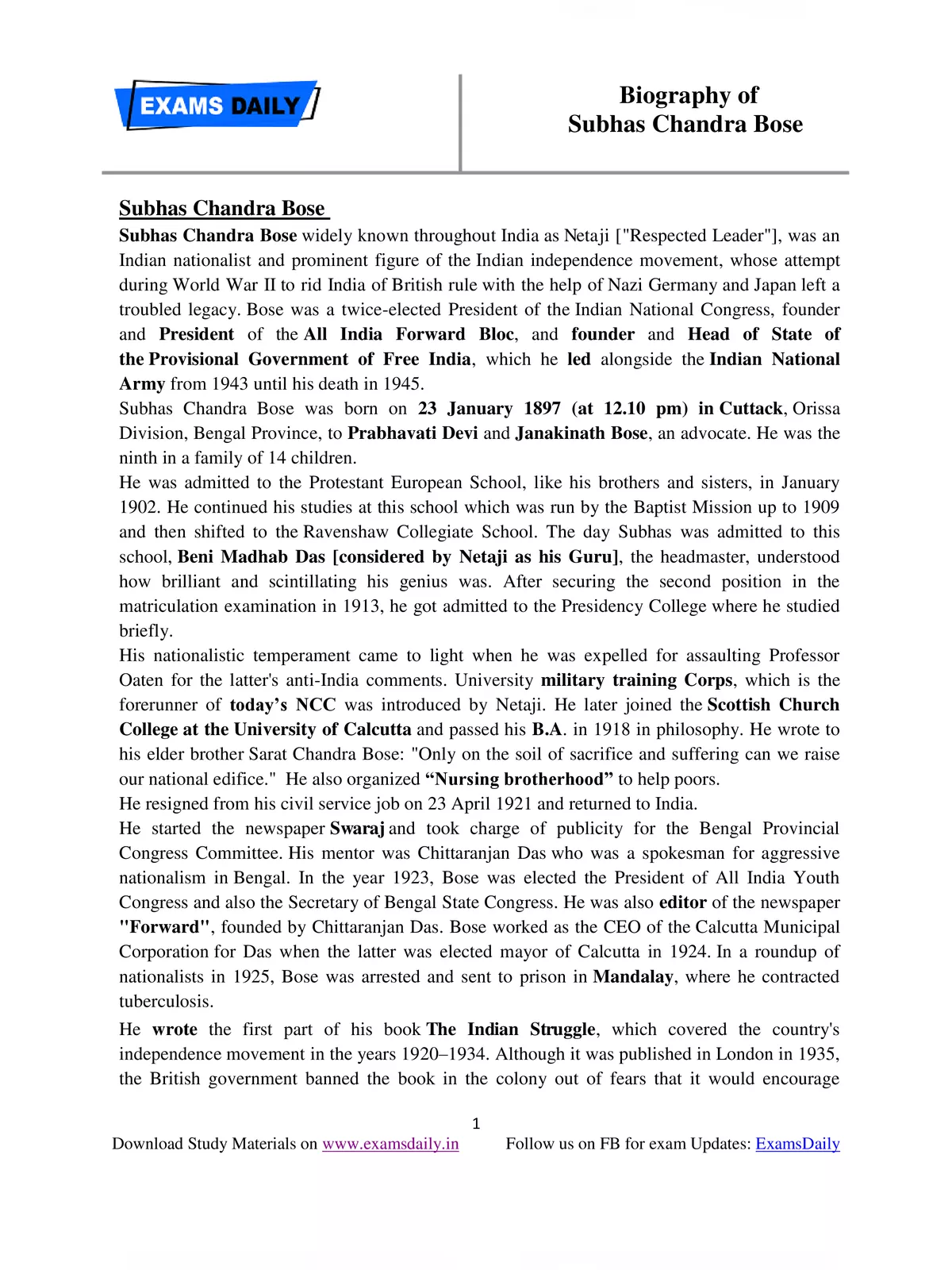Subhash Chandra Bose Biography English - Summary
Subhas Chandra Bose, lovingly known as Netaji, played a crucial role in India’s struggle for independence. Born in 1897 in Cuttack, Bengal Province, he was the second child in a big family of 14 siblings. A key figure in the non-cooperation movement, he later became a prominent leader in the Indian National Congress. His dedication to socialist policies distinguished him and made him a well-known figure in the more militant branch of the Congress. Despite various challenges, including imprisonment, Subhash Chandra Bose inspired countless people by guiding them on the path to freedom.
Early Life and Education of Subhash Chandra Bose
Subhash Chandra Bose began his education at the Protestant European School in January 1902, following in the footsteps of his siblings. He continued there until 1909 before moving to Ravenshaw Collegiate School. The headmaster of this school, Beni Madhab Das, recognized Bose’s exceptional intelligence right away. After achieving the second highest score in the matriculation examination in 1913, he briefly attended Presidency College.
Subhash Chandra Bose Biography English – Achievements, Works, and Contributions
Upon returning to India, Bose joined the Mahatma Gandhi-led Non-Cooperation Movement against British rule. During this time, the Indian National Congress (INC) became a significant non-violent force. Gandhi encouraged Bose to collaborate with Chittaranjan Das, who later became an important mentor to him. Bose served as the commandant of the Bengal Congress volunteers and faced multiple imprisonments during the Freedom Movement. He used his time in prison to share his ideas, launching the publication ‘Swaraj’ after his release in 1927.
Later, as the general secretary of the Congress party, he worked with Jawaharlal Nehru. In 1938, he became the president of the Indian National Congress, where he established a planning committee to strategize industrialization in India. In 1939, he formed the All India Forward Bloc, a left-leaning nationalist party aimed at bringing together the party’s radical members.
Subhash Chandra Bose is perhaps most famous for creating the Indian National Army (INA), also known as the Azad Hind Fauj. This army was formed after Japan took over much of South-East Asia, offering a strategic chance to free India from British rule. Bose recruited soldiers from among British prisoners of war and Indians living in South-East Asia who wished to join the fight for India’s freedom.
In 1943, he traveled to Singapore to further enlist soldiers for the Azad Hind Fauj. At its peak, the INA consisted of about 45,000 soldiers, including Indian prisoners of war and others dedicated to India’s liberation. Notably, while in the Japanese-occupied Andaman Islands, Netaji raised the Indian flag as a beacon of hope.
In 1944, the Azad Hind Fauj launched operations in India’s northeastern regions to reclaim the nation from British rule. Women played an active role in this freedom struggle as well. Under the leadership of Captain Lakshmi Swaminathan, the women’s regiment fought bravely in battles against British forces.
Netaji Subhas Chandra Bose Family
Subhash Chandra Bose was born to Prabhavati Devi and Janaki Nath Bose. He was part of a large family, having 6 sisters and 7 brothers, making a total of 13 siblings. Raised in a wealthy household, his family background significantly shaped his early life. You can find everything about Netaji Subhash Chandra Bose Family in this Subhash Chandra Bose Biography article.
Death of Netaji Subhas Chandra Bose
On August 18, 1945, a tragic event occurred when Subhash Chandra Bose died in a plane crash while traveling from Taiwan to Tokyo, around the same time as the INA forces’ surrender. Reports indicate that his death happened due to an aircraft incident over Taipei, Taiwan, on that fateful day.
You can download the Subhash Chandra Bose Biography English PDF using the link given below for a more detailed look into his life and contributions.
